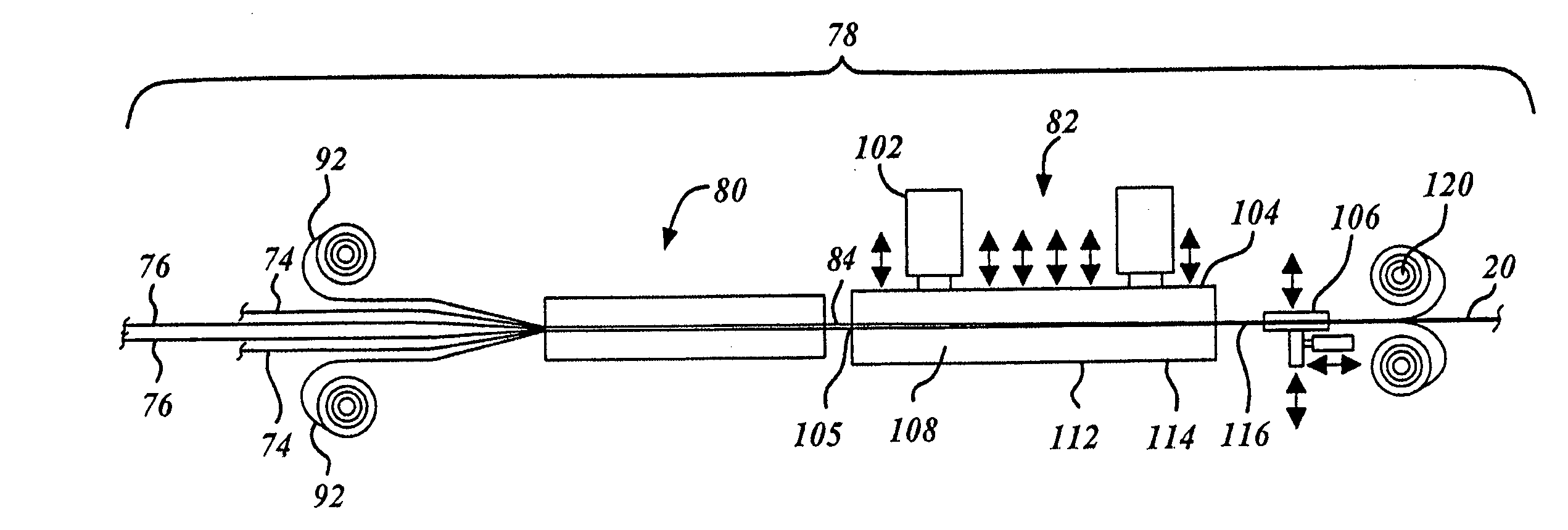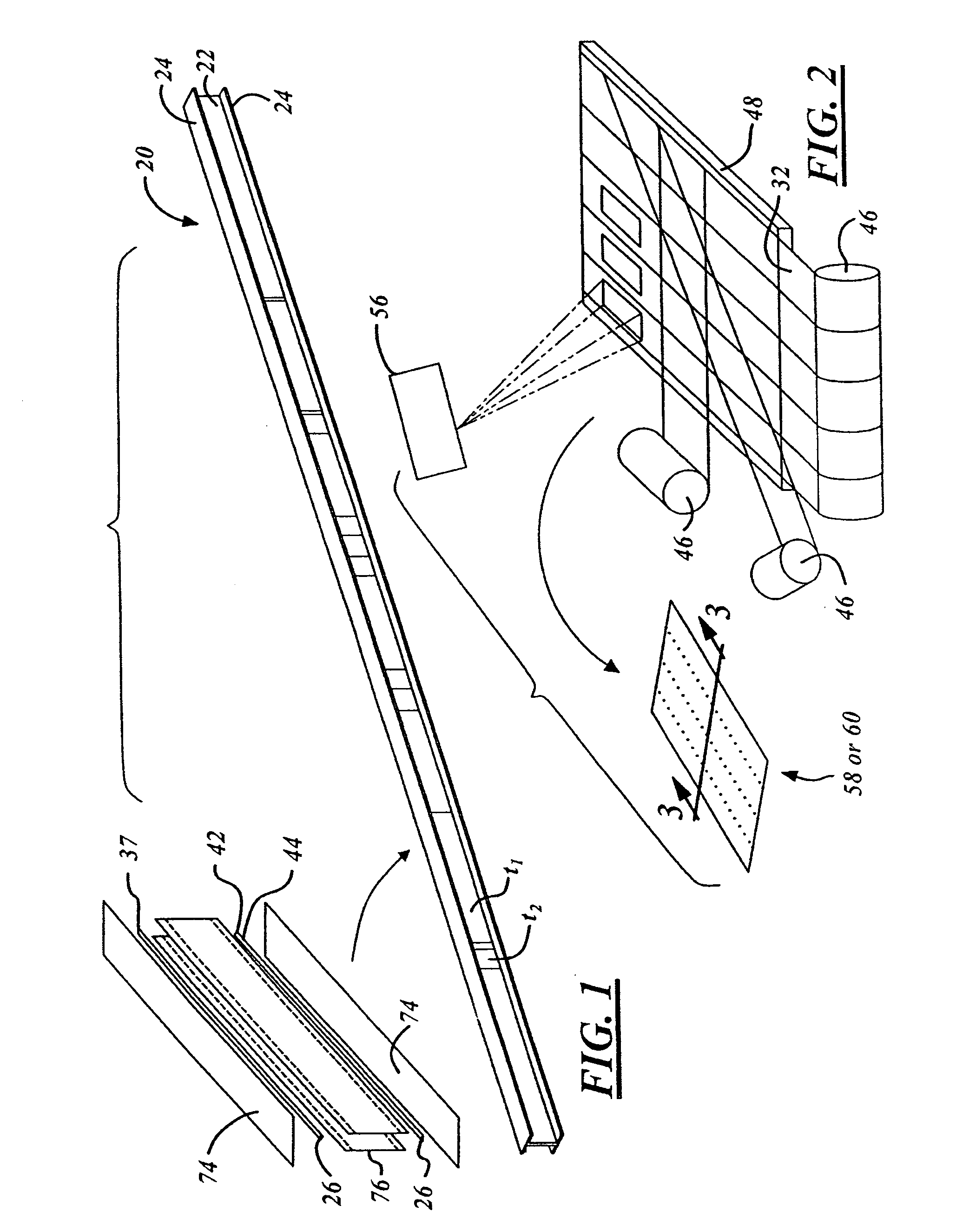Novel fabrication process for thermoplastic composite parts
a technology of thermoplastic composite parts and fabrication processes, which is applied in the field of plastic material fabrication processes, can solve the problems of lack of the ability to produce parts of varying thickness that are needed for lightweight aerospace structures and other structures
- Summary
- Abstract
- Description
- Claims
- Application Information
AI Technical Summary
Problems solved by technology
Method used
Image
Examples
Embodiment Construction
[0013] The present invention provides a novel fabrication method of forming a thermoplastic composite (“TPC”) laminate material with tailored and varying thicknesses in a continuous process. The present invention finds applicable uses in a wide variety of potential applications, including for example, in the aerospace industry. The preferred method of the present invention is ideally suited for forming thermoplastic composite stiffening members in the supporting framework of a commercial aircraft fuselage. Potential examples of thermoplastic composite stiffening members include but are not limited to fuselage skins, wing skins, door panels, access panels, keel beams, floor beams, and deck beams. For illustrative purposes only, the present invention will be described in reference to forming a thermoplastic composite floor beam 20 for use in a commercial aircraft fuselage.
[0014] Referring now to FIG. 1, a thermoplastic composite laminate, here a thermoplastic composite laminate floor...
PUM
| Property | Measurement | Unit |
|---|---|---|
| thickness | aaaaa | aaaaa |
| thermoplastic | aaaaa | aaaaa |
| temperature | aaaaa | aaaaa |
Abstract
Description
Claims
Application Information
 Login to View More
Login to View More - R&D
- Intellectual Property
- Life Sciences
- Materials
- Tech Scout
- Unparalleled Data Quality
- Higher Quality Content
- 60% Fewer Hallucinations
Browse by: Latest US Patents, China's latest patents, Technical Efficacy Thesaurus, Application Domain, Technology Topic, Popular Technical Reports.
© 2025 PatSnap. All rights reserved.Legal|Privacy policy|Modern Slavery Act Transparency Statement|Sitemap|About US| Contact US: help@patsnap.com



